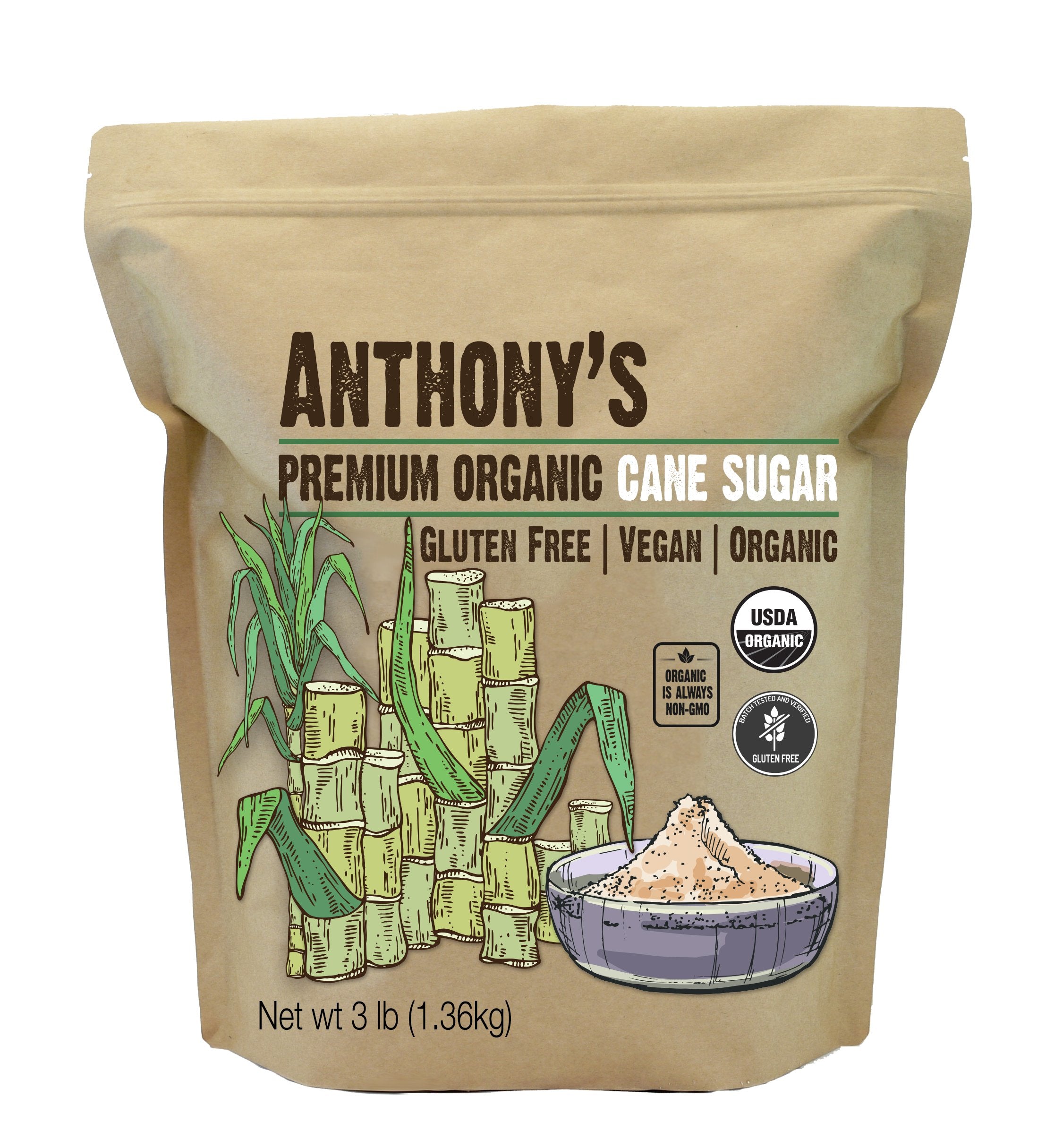Cane Sugar Processing Explained: What Takes Place Inside a Sugar Mill
Cane Sugar Processing Explained: What Takes Place Inside a Sugar Mill
Blog Article
A Comprehensive Guide to the Environmental Influence and Sustainability Practices in Walking Stick Sugar Processing
The environmental impact of walking stick sugar processing offers a complex variety of obstacles that warrant mindful examination. From dirt destruction and extreme water usage to the carbon footprint related to farming and manufacturing, the repercussions of traditional practices are significant. In contrast, the adoption of cutting-edge sustainability procedures offers a pathway toward much more responsible manufacturing approaches. Recognizing the interaction in between these problems is vital for stakeholders in the market. What particular techniques can be applied to strike a balance in between productivity and ecological stewardship? The solutions exist in a better consider both the challenges and potential solutions.
Introduction of Walking Cane Sugar Processing
Cane sugar handling involves a collection of organized steps that change sugarcane into refined sugar. Originally, collected sugarcane is transferred to processing centers, where it undertakes cleansing to remove soil and debris. Following this, the walking stick is crushed to remove juice, which is then made clear by getting rid of contaminations with home heating and the addition of lime.
The cleared up juice goes through evaporation, where water is removed to concentrate the sugar web content. This focused syrup is then crystallized through air conditioning, allowing sugar crystals to form. These crystals are separated from the continuing to be syrup utilizing centrifugation, leading to raw sugar. To attain polished sugar, the raw product undergoes additional purification processes, which may consist of washing and filtering system to eliminate continuing to be impurities and color.
The end product is after that dried out and packaged for circulation. Throughout this entire process, maintaining efficiency and quality assurance is vital to ensure the sugar meets market criteria. Each action in walking stick sugar processing not only adds to the last product however likewise has implications for resource use and waste generation, establishing the phase for conversations on sustainability and ecological effects related to sugar production.
Ecological Difficulties of Production
The production of cane sugar provides a number of considerable ecological obstacles that warrant focus. One key problem is the comprehensive use agrochemicals, including pesticides and fertilizers, which can cause dirt destruction, biodiversity loss, and contamination of neighborhood water sources. The overflow from sugarcane areas frequently lugs these chemicals into neighboring ecosystems, disrupting aquatic life and influencing the wellness of communities reliant on these water bodies.
One more difficulty is the high energy intake connected with sugarcane processing. The boiling and refining phases require considerable warmth, largely generated by shedding nonrenewable fuel sources, contributing to greenhouse gas exhausts. In addition, the expansive land location needed for sugarcane growing can result in deforestation and environment damage, more aggravating environment modification and threatening wild animals.
Furthermore, the labor practices in some regions raise ethical concerns, as employees may deal with bad working conditions and inadequate incomes. This scenario commonly continues a cycle of poverty in local communities. Cane Sugar Processing. Resolving these environmental obstacles is essential for creating a lot more lasting techniques in walking stick sugar manufacturing, ultimately benefiting both the environment and the areas entailed in this industry
Water and Land Use Impact
Water sources and land application are critical components in the walking stick sugar market that significantly influence the setting. The farming of sugarcane requires substantial water input, with quotes suggesting that it can eat approximately 2,000 litres of water per kilogram of sugar produced. This extensive usage of water commonly brings about depletion of regional water resources, affecting not only the sugarcane plantations however likewise bordering communities and areas that rely on the very same water resources for farming and domestic use.

In addition, land usage for sugarcane cultivation can result in deforestation and the conversion of all-natural environments right into monoculture plantations. This technique lessens biodiversity, disrupts neighborhood communities, important link and adds to soil degradation. The expansion of sugarcane areas usually intrudes on beneficial farming land, developing competition for sources in between food and biofuel manufacturing.
Sustainable techniques, such as optimizing irrigation strategies and applying plant turning, are important to alleviate these impacts. By taking on a lot more reliable water use and land management strategies, the walking stick sugar industry can reduce its ecological impact, making certain an equilibrium in between farming productivity and ecological preservation.
Greenhouse Gas Emissions
Greenhouse gas discharges represent a considerable ecological worry within the walking stick sugar handling industry, specifically as agricultural methods increase to fulfill global need. The cultivation of sugarcane, a plant that thrives in tropical environments, counts heavily on artificial plant foods and pesticides, which add to nitrous oxide exhausts. Furthermore, land-use modifications, including logging for brand-new sugarcane ranches, release co2 stored in plants and dirt.
During handling, power usage is another major resource of greenhouse gas exhausts - Cane Sugar Processing. Numerous sugar mills utilize nonrenewable fuel sources to power machinery and create warmth, leading to substantial carbon impacts. Furthermore, the transport of raw sugarcane and finished items includes layers of emissions via gas burning in cars
This entails reviewing existing farming techniques, processing approaches, and transport systems discover here to identify areas for enhancement and mitigation. Attending to greenhouse gas exhausts is essential for fostering an extra sustainable walking stick sugar industry in a transforming environment.

Sustainable Practices and Innovations
Sustainable techniques and technologies are significantly crucial in the walking cane sugar processing industry as stakeholders seek to minimize ecological impacts while keeping performance. One considerable development is the execution of integrated crop monitoring, which maximizes resource usage by incorporating soil monitoring, insect control, and crop turning methods. This technique enhances yield while reducing chemical inputs and maintaining dirt health.
In addition, the fostering of renewable resource sources, such as biomass from sugarcane deposits, has acquired grip - Cane Sugar Processing. By converting waste products into power, refining facilities can lower their reliance on fossil gas, therefore decreasing greenhouse gas discharges
Water monitoring methods have also seen renovations with the recycling and reusing of water in handling plants, substantially decreasing freshwater intake. Advancements in modern technology, such as accuracy agriculture, make it possible for farmers to monitor plant health and resource usage click here now better, ensuring lasting farming practices.
Moreover, accreditation programs like Fair Trade and Rain forest Partnership motivate eco liable farming techniques and advertise social equity within the supply chain. By embracing these sustainable practices and technologies, the cane sugar handling industry can improve its durability and add favorably to ecological stewardship.
Verdict
The ecological influence of walking cane sugar handling provides considerable obstacles, consisting of dirt degradation, high water consumption, and greenhouse gas discharges, alongside honest problems associated with labor techniques. Resolving these problems through lasting methods, such as integrated plant monitoring, sustainable energy fostering, and water recycling, is essential. By advertising socially equitable and environmentally liable methods in sugar production, the sector can minimize its unfavorable effects, guaranteeing a much more lasting future for both communities and ecological communities associated with this market.
Walking cane sugar processing involves a collection of systematic steps that change sugarcane into refined sugar. Each action in cane sugar processing not just adds to the last item yet additionally has implications for resource use and waste generation, setting the phase for conversations on sustainability and environmental effects linked with sugar production.
Greenhouse gas discharges represent a substantial environmental problem within the cane sugar handling industry, especially as farming methods broaden to meet international need.Sustainable techniques and innovations are increasingly essential in the walking cane sugar processing industry as stakeholders look for to decrease environmental impacts while preserving efficiency.The ecological influence of walking stick sugar processing presents significant obstacles, including dirt destruction, high water consumption, and greenhouse gas exhausts, together with moral issues related to labor practices.
Report this page